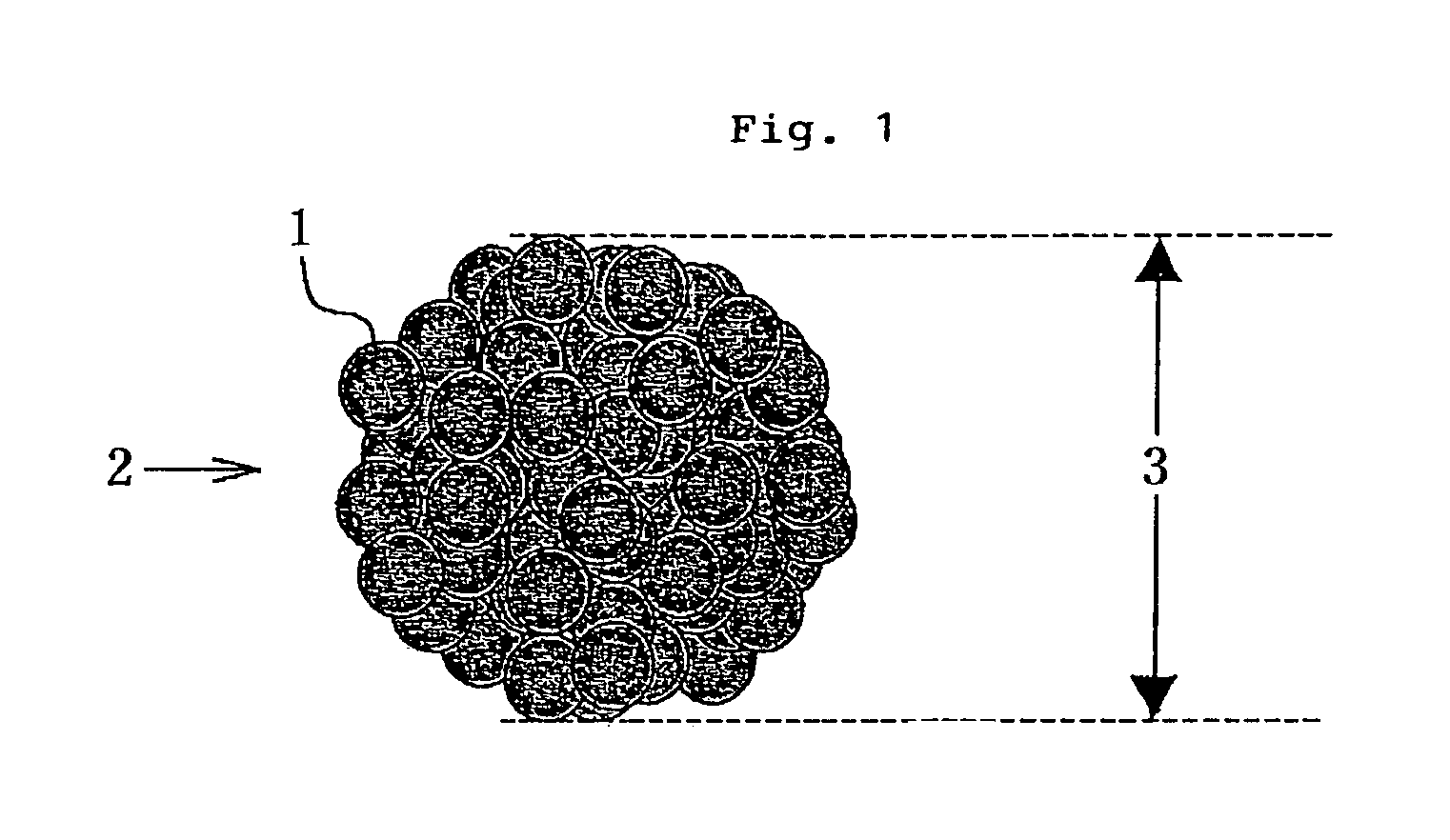Friction material composition and friction material using the composition
a technology of friction material and composition, which is applied in the direction of friction lining, transportation and packaging, other chemical processes, etc., can solve the problems of reducing the friction coefficient, hardly solving the problem of the reduction of the friction coefficient at elevated temperatures, and fading phenomenon, so as to improve the ability to prevent high frequency noise and reduce the friction coefficient
- Summary
- Abstract
- Description
- Claims
- Application Information
AI Technical Summary
Benefits of technology
Problems solved by technology
Method used
Image
Examples
example 2
[0046]A γ-alumina (primary particles of activated alumina) having an average pore diameter of 150 Å, an average particle diameter of 50 μm and a specific surface area of 400 m2 / g and other components listed in Table 1 were mixed in the amounts listed in Table 1 in an mixer at a rotational speed of 3000 r / min for 4 minutes, to give a friction material composition B.
example 3
[0047]A γ-alumina (primary particles of activated alumina) having an average pore diameter of 50 Å, an average particle diameter of 50 μm and a specific surface area of 100 m2 / g and other components listed in Table 1 were mixed in the amounts listed in Table 1 in an mixer at a rotational speed of 3000 r / min for 4 minutes, to give a friction material composition C.
example 4
[0048]A γ-alumina (primary particles of activated alumina) having an average pore diameter of 150 Å, an average particle diameter of 50 μm and a specific surface area of 100 m2 / g and other components listed in Table 1 were mixed in the amounts listed in Table 1 in an mixer at a rotational speed of 3000 r / min for 4 minutes, to give a friction material composition D.
PUM
| Property | Measurement | Unit |
|---|---|---|
| diameter | aaaaa | aaaaa |
| particle diameter | aaaaa | aaaaa |
| specific surface area | aaaaa | aaaaa |
Abstract
Description
Claims
Application Information
 Login to View More
Login to View More - R&D
- Intellectual Property
- Life Sciences
- Materials
- Tech Scout
- Unparalleled Data Quality
- Higher Quality Content
- 60% Fewer Hallucinations
Browse by: Latest US Patents, China's latest patents, Technical Efficacy Thesaurus, Application Domain, Technology Topic, Popular Technical Reports.
© 2025 PatSnap. All rights reserved.Legal|Privacy policy|Modern Slavery Act Transparency Statement|Sitemap|About US| Contact US: help@patsnap.com

